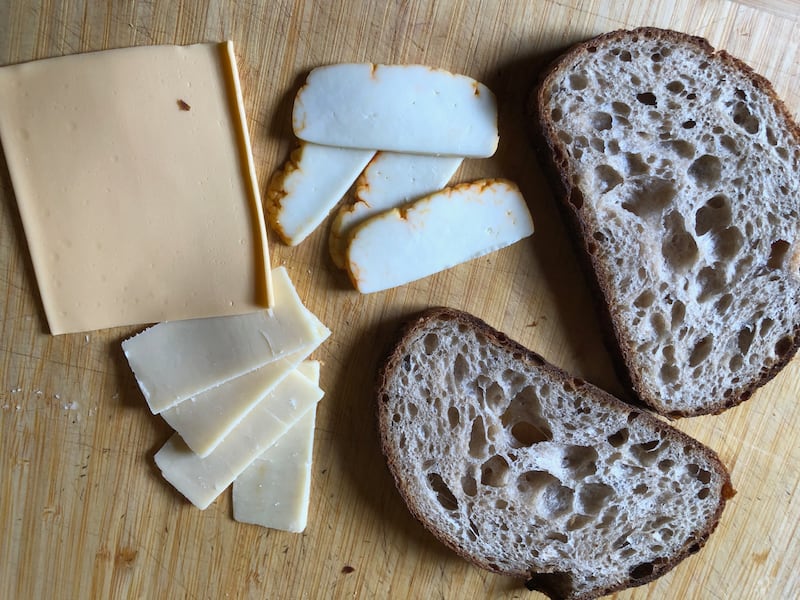Jim Dixon wrote about food for WW for more than 20 years, but these days most of his time is spent at his olive oil-focused specialty food business Wellspent Market. Jim’s always loved to eat, and he encourages his customers to cook by sending them recipes every week through his newsletter. We’re happy to have him back creating some special dishes just for WW readers.
Few things exemplify the phrase “more than a sum of its parts” better than a grilled cheese sandwich. Cheese and bread are transformed by heat into soft and comforting bites at once both familiar and surprisingly delicious. But to get that near-perfect melty experience, you must be particular.
Start with the right bread. Traditionalists might insist on white sandwich bread. Grilled carefully to a golden brown with a slight crunch yielding to the soft crumb, it has its appeal. But a rustic loaf, with a dark crust and chewy crumb, makes a better sandwich with more flavor and texture. Local bakers use better flours and long fermentation to bake incredible breads, and the perfect grilled cheese deserves really good bread.
Pick your cheeses carefully. You need at least two, but three is better. I start with sharp cheddar, one of my favorite cheeses. The long aging process creates more complexity and the acidic tang that brightens its flavor. A softer cheese like muenster, provolone, or the local Oaxaca-style from Salem’s Don Froylan offers a mellow counterpoint to the sharp cheddar, and it melts nicely. But for the perfect melty quality, you also need a slice of American.

Cheese snobs might hate it, but the blend of actual cheese (albeit a bland, industrial cheddar or colby) with some added dairy products and emulsifying salts melts like nothing else. A single slice adds a gooey meltiness no other cheese can touch.
While you might be tempted with additions, resist. While I’ve slipped anchovies, pickled peppers, bacon, and the spicy, spreadable pork salami called ‘nduja into grilled cheese and generally enjoyed the results, I almost always wished I had just left it plain. Same goes for condiments, especially mayonnaise. I love the stuff, but it just gets in the way and prevents the cheese from melting into the airy, open pockets of that good bread you’re using.
And please don’t spread mayo on the outside of the bread. Yes, it won’t burn as easily and adds a little bit of crunch, but neither attribute outweighs the fussiness of smearing the outside of the sandwich. Once things get stacked it’s easy to get the mayo on the top, but flip it over to get the other side and there’s mayo everywhere. It’s just not worth it. One of the wonders of the perfect grilled cheese is ease of construction, so just slice some cheese, lay it on the bread, and grill it.
Of course I’m biased, but I think extra-virgin olive oil is better than butter for the grilling part. I won’t fight you, but I know my olive oil grilled cheese will taste better than your buttery version. When I’ve got the sandwich assembled, I heat a small cast-iron skillet over medium for a few minutes, add about a tablespoon of good extra-virgin olive oil, and carefully place the sandwich in the pan.
Cover it and cook for a few minutes, checking to make sure the bread isn’t getting too dark. You want the Maillard reaction between the amino acids and carbohydrates in the bread to create new compounds like furanones that add a caramel-y note, but not the bitter char of carbon. Flip the sandwich carefully, adding a little more olive oil if the skillet looks dry, reduce the heat, cover, and cook for another few minutes. Eat right away while the cheese is melty.
